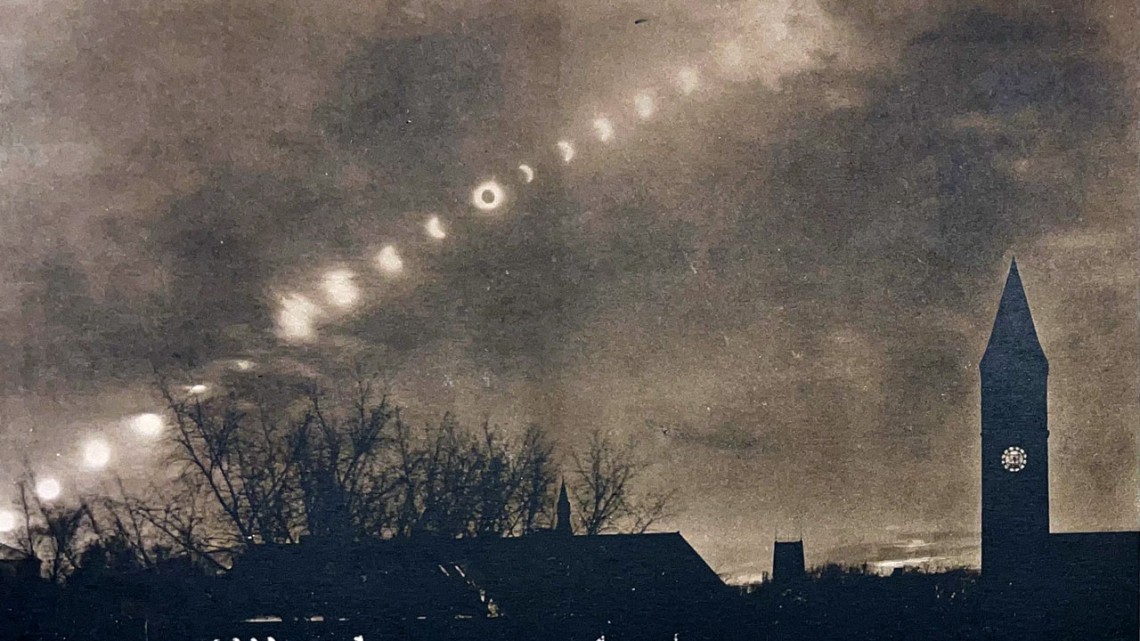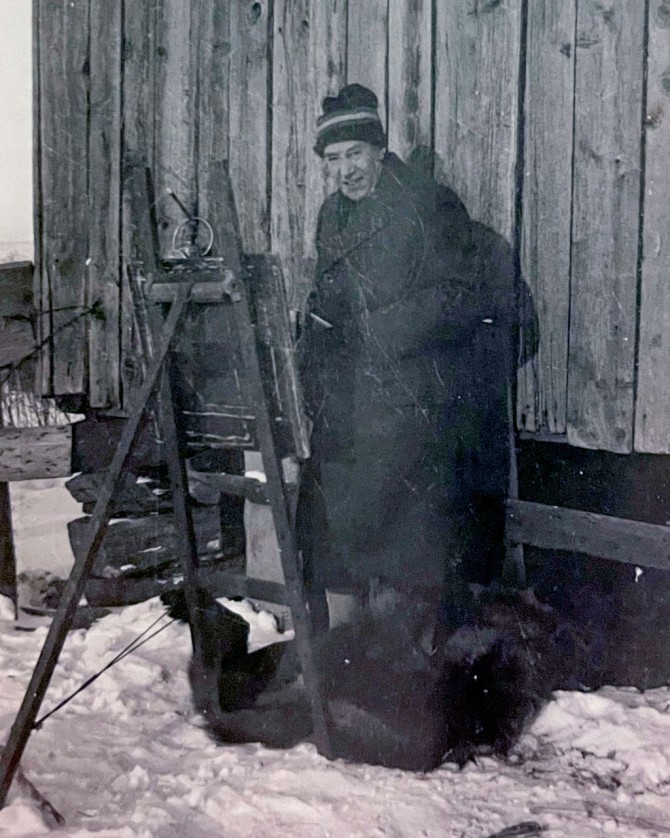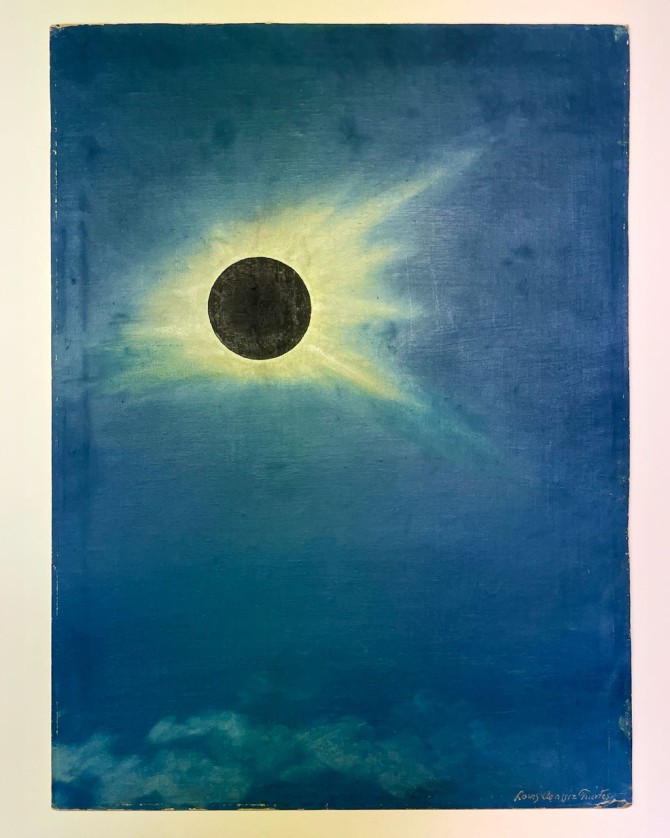
A detail of the 1926 “Cornell Calendar” sold by G. F. Morgan, featuring Morgan’s multiple-exposure photograph of the 1925 total solar eclipse and other scenes of campus.
From omen to breakthrough: Exhibit explores eclipses
By Jose Beduya
As excitement builds for the solar eclipse on April 8, a Cornell University Library exhibit examines this astronomical phenomenon through the lens of history and the popular imagination – from being seen as an omen of doom to becoming a sought-after spectacle of celestial mechanics.
“Solar Eclipses: From Fear to Knowledge” opens March 22 and runs through July 19 in the Michael T. Sillerman ’68 Rotunda of Carl A. Kroch Library, featuring manuscripts, photographs and other materials from the library’s Rare and Manuscript Collections.
“The eclipse gives us a wonderful opportunity to display our highlights from the History of Science Collections,” said Henrik Spoon – physics, astronomy and mathematics librarian – who co-curated the exhibit. Often used for research and teaching, these collections include pioneering works of astronomy, such as Nicolaus Copernicus’ “De revolutionibus orbium coelestium libri” VI (“Six Books Concerning the Revolutions of the Heavenly Orbs”) from 1543, which defied long-held beliefs and contributed to the Scientific Revolution during the 16th and 17th centuries across Europe.
“Copernicus had the audacity to demote the Earth from its spot at the center of the universe and make it just another planet orbiting the sun,” Spoon said. “Why? Because his scientific curiosity demanded a better explanation for observational flaws that he found in the centuries-old geocentric model.”
Juxtaposed with scientific manuscripts are books on superstitions and beliefs, including a 1625 pamphlet on the Apocalypse by Johann Peil that bears an illustration of a lunar and solar eclipse happening at the same time – a physically impossible event.
Through historical documents, the exhibit also highlights breakthroughs achieved through experiments during solar eclipses, such as the discovery of helium in the sun, and the confirmation of Einstein’s theory of relativity.
“Solar Eclipses” also features important scientific documents from other parts of the globe, said Laurent Ferri, curator of pre-1800 Collections, and co-curator of the exhibit. “We have a book from the Indo-Asian world, we have a very interesting Chinese-Japanese book from the 17th century, and we have a series of photographic images showing the first Chinese female astronomer who went to Japan to observe an eclipse in 1936,” Ferri said. “This makes the narrative much more global.”
For co-curator Evan Earle, the Dr. Peter J. Thaler ’56 Cornell University Archivist, the exhibit also provides an opportunity to connect with local history. One display case features one of Ezra Cornell’s diaries, containing notes and drawings about a partial solar eclipse in 1869, as well as items related to the total solar eclipse seen over campus in 1925, including a calendar of photographs, and an oil painting by ornithologist Louis Agassiz Fuertes.
“The eclipse is something special that the community can experience all together and share,” said Earle ’02, M.S. ’14. “Viewers of the exhibit can see how this shared experience was felt throughout history.”
Jose Beduya is writer, editor and social media coordinator for Cornell University Library.
Media Contact
Get Cornell news delivered right to your inbox.
Subscribe


